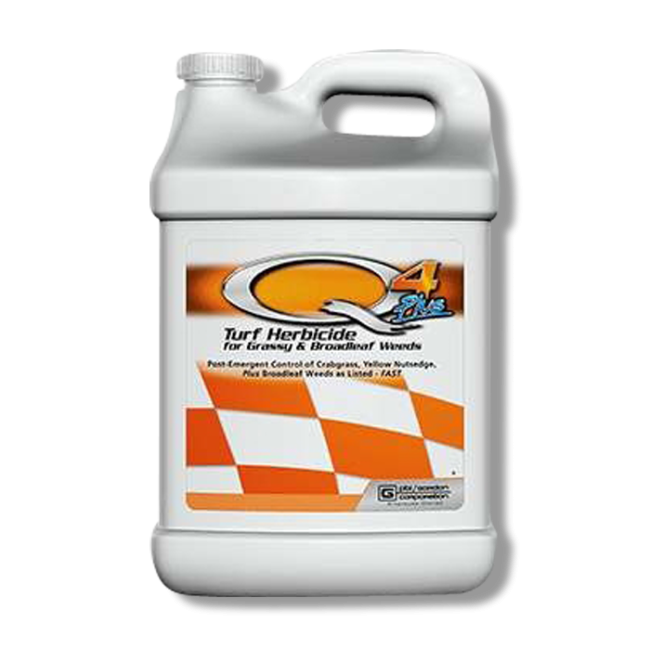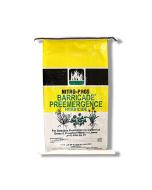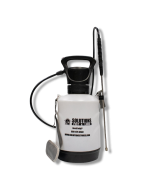Gain access to personalized product screening, the best pricing, rewards, and more!







application2
Q4 Plus Herbicide
12/27/25
Q4 Plus Herbicide, manufactured by PBI Gordon, is a selective post-emergent herbicide that effectively controls broadleaf and grassy weeds like crabgrass, yellow nutsedge, clover and chickweed, and 91 other species.
This concentrate delivers a powerful punch on residential and commercial turf weeds, with four active ingredients for maximum results: Quincolarac 8.43%, sulfentrazone 0.69%, 2,4-D 11.81%, and dicamba 1.49%.
This unique combination of active ingredients results in complete systemic and contact activity on weeds without injuring desired foliage through multiple modes of action.
Q4 Plus provides convenient weed control, with results showing that it can be done in 7 days and a reseeding interval of 4 weeks. After 6 hours of application, rainfall will not deter extra knockdown of troublesome weeds, making it an economical herbicide.
Tools Needed
You must mix the product into your chosen sprayer, such as a backpack, hose-end, or hand-pump sprayer. For the average job, a hand-pump gallon sprayer works best.
How to Use
- Step 1: Delay mowing 2 days before and 2 days after the application of Q4 Plus. Determine how much you will need by measuring the square footage of the treatment area. To do this, you will need to measure the length and width of the treatment area in feet and then multiply these two values together (length X width = square footage). For acreage, divide the square footage by one acre (square footage / 43,560 sq. ft. = acre). Spot treatments on cool-seasoned turf, use 2.6 to 3.0 fl. oz. per 1 gallon of water per 1,000 sq. ft. of turfgrass. Broadcast applications on cool-seasoned turf mix 7 to 8 pints of product per 20 gallons of water per acre. Spot treatments on warm-seasoned turf, apply 1.84 to 2.57 fl. oz. of product per 1 gallon of water per 1,000 sq. ft. of turfgrass. Broadcast applications on warm-seasoned turf use 5 to 7 pints of product per 20 gallons of water per acre. The maximum number of broadcast applications is limited to 2 per year, with a minimum of 30 days between applications for ornamental turf and non-cropland areas.
- Step 2: Fill your selected sprayer with half the water and add a measured amount of product. Fill your tank the rest of the way with water. Close the lid and shake until the solution is evenly agitated.
- Step 3: Spray the top and bottom of weed leaves with the mixed solution until wet, but not to the point of runoff. Wait until 24 hours have passed after application before watering treated areas. This rule can be ignored for warm-seasoned turf such as Bermudagrass and Zoysiagrass, which the label recommends watering 24 hours before and 24 hours after application with half an inch of water. If rainfall does not occur in 2 to 7 days after application, irrigation of at least one-half inch is recommended. If reapplication is needed, wait until 30 days have passed from the last treatment for ornamental turf and non-cropland areas and at least 21 days from the previous application for sod farms.
Where to Use
Q4 Plus can be used on the following established warm-seasoned turf and cool-seasoned turf on residential/domestic sites (areas associated with the household or home life, including but not limited to apartment complexes, condominiums, and patient care areas of nursing homes, mental institutions, hospitals, or convalescent homes), ornamental sites (turfgrass established around residences, parks, streets, retail outlets, cemeteries, industrial and institutional buildings, recreation areas, fairgrounds, areas adjacent to athletic fields and paved areas), institutional sites (turf areas around properties and facilities providing a service to public or private organizations including, but not limited to hospitals, nursing homes, schools, museums, libraries, sport facilities, golf courses (fairways and roughs), and office buildings), non-cropland sites (highway rights-of-way (principal, interstate, county, private, and unpaved roads); roadsides, roadside ditches, road shoulders, road embankments, dividers and medians; municipal, state and federal lands; airports and military installations), and agricultural site (commercial sod production).
Tolerant cool-season grasses include Kentucky bluegrass, Fescues, and Perennial ryegrass, and tolerant warm-season grasses include Bermudagrass and Zoysiagrass.
Do not apply this product to bahiagrass, bentgrass, carpetgrass, centipedegrass, dichondra, St. Augustinegrass, greens and collars at golf courses, lawns with desirable clovers or legumes, and ornamentals (flowers, trees, groundcovers, landscape beds, and shrubs).
When to Use
Spray in the morning and avoid application during extreme hot or dry conditions.
For best results in the post-emergent control of grassy weeds, early summer treatments of Q4 Plus Herbicide are recommended. Applications in the summer (approximately July 15 to August 15) to older, drought-stressed grassy weeds are less effective. Late summer applications (after August 15) to mature crabgrass can be very effective.
Apply this product to broadleaf weeds that are young and actively growing for the best results. Spring and fall treatments under adequate soil moisture are recommended. Applications in the summer can be done, but are less effective. Fall applications improve control for emerged winter annuals and perennials such as henbit, chickweed, clover, and ground ivy.
Do not broadcast Q4 Plus Herbicide when temperatures are above 90 degrees Fahrenheit; temporary turfgrass discoloration can also be expected with spot treatments when air temperatures exceed 90 degrees Fahrenheit and when rainfall is not expected within 24 hours of application.
Safety Information
Q4 Plus Herbicide is safe to use around children and pets when applied according to the product label instructions. Always wear the proper personal protective equipment (PPE) when mixing and applying this product.
Do not allow people or pets to enter the treated area until 48 hours have passed after application.
Special Considerations
Tolerant turf species on the Q4 Plus Herbicide label may exhibit temporary turf injury or discoloration, but turf generally recovers in 7 to 21 days.
| Restricted Use | No |
|---|---|
| Shipping Restrictions | AK, HI, NJ |
| Availability | Online |
| Signal Word | CAUTION |
| Keith's Pro Tip | "When spraying with a flat fan nozzle tip, don't spray in a back or forth, side to side or swinging arm motion. Instead, hold it stationary at the proper height. Side-to-side motion spraying results in uneven coverage." |
| Target Pests Multi | Barnyardgrass, Bedstraw, Bindweed, Black Medic, Blue-eyed Mary, Broadleaf Plantain, Broadleaf Signalgrass, Buckhorn Plantain, Bull Thistle, Carolina Geranium, Carpetweed, Cinquefoil, Common Burdock, Common Catsear, Common Chickweed, Common Lespedeza, Common Mallow, Common Speedwell, Compassplant, Creeping Beggarweed, Creeping Buttercup, Creeping Jenny, Creeping Oxeye, Creeping Woodsorrel, Curly Dock, Dandelion, Dayflower, Deadnettle, Dock, Dutch Clover, English_Daisy, False Dandelion, Field Bindweed, Field Oxeye-daisy, Florida Betony, Florida Pusley, Giant Foxtail, Green Foxtail, Groundsel, Hawkweed, Healall, Henbit, Honeysuckle Clover, Innocence, Knotweed, Lambsquarters, Large Crabgrass, Lawn Burweed, Morningglory, Mouseear Chickweed, Old World Diamond Flower, Oxalis, Parsley Piert, Pennsylvania Smartweed, Pennywort_Dollarweed, Pepperweed, Pigweed, Pineapple_Weed, Plantain, Poison Ivy, Poison Oak, Prickly Lettuce, Puncture Vine, Purple Cudweed, Purplewort, Purslane, Ragweed, Red Sorrel, Redstem Filaree, Redweed, Sheep Sorrel, Shepherdspurse, Slender Speedwell, Smooth Crabgrass, Spotted Catsear, Thistle, Thymeleaf Speedwell, Veronica Speedwell, Virginia Buttonweed, White Clover, White Heath Aster, White Prairie Aster, White Trefoil, Whitestem Filaree, Wild Carrot, Wild Garlic, Wild Geranium, Wild Lettuce, Wild Mustard, Wild Onion, Wild Strawberry, Yarrow, Yellow Foxtail, Yellow Rocket, Yellow_Nutsedge, Yellow_Woodsorrel, Chicory, Dogfennel, Ground Ivy, Matchweed, Wild Violet |
| Time to Kill | Q4 Plus works quickly where treated as plants ill show injury results and eventual death 7 to 21 days after application. Symptoms include stunting, gradual reddening, yellowing, and eventual death tissue. |
| Chemical Type | Herbicide |
| Formulation | Emulsifiable Concentrate (EC) |
| Application Methods | Broadcast Spray, Spot Treatment |
| Product Drawbacks | Q4 Plus Herbicide should not be applied in the late evening or afternoon as extreme heat can cause injury or discoloration. |
| Active Ingredient | Quinclorac 8.43% Sulfentrazone 0.69% 2,4-D, dimethylamine salt 11.81% Dicamba, dimethylamine salt 1.49% |
| Application Equipment | Backpack Sprayer, Hose End Sprayer |
| Mix Rate | Spot treatments on cool-seasoned turf, use 2.6 to 3.0 fl. oz. of Q4 Plus Herbicide per 1 gallon of water per 1,000 sq. ft. of turfgrass. Broadcast applications on cool-seasoned turf, mix 7 to 8 pints of product per 20 gallons of water per acre. Spot treatments on warm-seasoned turf, apply 1.84 to 2.57 fl. oz. of product per 1 gallon of water per 1,000 sq. ft. of turfgrass. Broadcast applications on warm-seasoned turf, use 5 to 7 pints of product per 20 gallons of water per acre. |
| Use Sites | Indoors, Outdoors |
| Yield | A 2.5 gallon container of Q4 Plus Herbicide can treat over 2.5 acres of land when using the application rate of 7 to 8 pints per acre. |
| EPA Registration No. | 2217-930 |
| Shelf Life | Q4 Plus Herbicide will last 3 years in storage when stored in its original container in a locked storage area inaccessible to children and pets. Keep from freezing. |
| Comparable Products | Trimec Southern |
| Children or pets? | No |
| Property Characteristics | None |
| Availability | Online |
| Restricted Use | No |
| Brand | PBI GORDON |
| Keith's Pro Tips | "When spraying with a flat fan nozzle tip, don't spray in a back or forth, side to side or swinging arm motion. Instead, hold it stationary at the proper height. Side-to-side motion spraying results in uneven coverage." |
| Product Drawbacks | Q4 Plus Herbicide should not be applied in the late evening or afternoon as extreme heat can cause injury or discoloration. |
| Target Pests | Aster, Barnyardgrass, Bedstraw, Black Medic, Blindweed, Blue-eyed Mary Innocence, Broadleaf Plantain, Broadleaf Signalgrass, Buckhorn Plantain, Bull Thistle, Carolina Geranium, Carpeetweed, Chicory, Cinquefoil, Clovers, Common Burdock, Common Catsear, Common Chickweed, Common Lespedeza, Common Mallow, Common Slender, Crabgrass, Creeping Beggarweed, Creeping Buttercup, Creeping Jenny, Creeping Oxeye, Creeping Woodsorrel, Curly Dock, Dandelion, Dayflower, Dead Mettle, Dock, Dogfennel, Dollarweed, Dutch Clover, English Daisy, False Dandelion, Field Bindweed, Field Oxeye-Daisy, Filaree, Florida Betony, Florida Pusley, Foxtail, Giant Foxtail, Green Foxtail, Ground Ivy, Groundsel, Hawkweed, Healall, Henbit, Honeysuckle Clover, Knotweed, Lambsquarters, Large Crabgrass, Lawn Burweed, Matchweed, Morningglory, Mouseear chickweed, Old World Diamond Flower, Oxalis, Parsley-Piert, Pennsylvania Smartweed, Pennywort, Pepperweed, Pigweed, Pineappleweed, Plantain, Poison Ivy, Poison Oak, Prickly Lettuce, Puncturevine, Purple Cudweed, Purplewort, Purslane, Ragweed, Red Sorrel, Redstem, Redweed, Sheep Sorrel, Shepherdspurse, Signalgrass, Smooth Crabgrass, Spotted Catsear, Spurge, Thimeleaf, Thistles, Veronica Speedwell, Virginia Buttonweed, White Brairie, White Heath, White Trefoil, Whitestem, Wild Carrot, Wild Clover, Wild Garlic, Wild Geranium, Wild Lettuce, Wild Mustard, Wild Onion, Wild Strawberry, Wild Violet, Yarrow, Yellow Foxtail, Yellow Nutsedge, Yellow Rocket, and Yellow Woodsorrel. |
| Application Equipment | Backpack Sprayer, Hose End Sprayer |
| Application Methods | Broadcast Spray, Spot Treatment |
| Active Ingredient | Quinclorac 8.43% Sulfentrazone 0.69% 2,4-D, dimethylamine salt 11.81% Dicamba, dimethylamine salt 1.49% |
| Product Type | Herbicide |
| Formulation | Emulsifiable Concentrate (EC) |
| Application Rate | Spot treatments on cool-seasoned turf, use 2.6 to 3.0 fl. oz. of Q4 Plus Herbicide per 1 gallon of water per 1,000 sq. ft. of turfgrass. Broadcast applications on cool-seasoned turf, mix 7 to 8 pints of product per 20 gallons of water per acre. Spot treatments on warm-seasoned turf, apply 1.84 to 2.57 fl. oz. of product per 1 gallon of water per 1,000 sq. ft. of turfgrass. Broadcast applications on warm-seasoned turf, use 5 to 7 pints of product per 20 gallons of water per acre. |
| Shelf Life | Q4 Plus Herbicide will last 3 years in storage when stored in its original container in a locked storage area inaccessible to children and pets. Keep from freezing. |
| Yield | A 2.5 gallon container of Q4 Plus Herbicide can treat over 2.5 acres of land when using the application rate of 7 to 8 pints per acre. |
| Use Sites | Indoors, Outdoors |
| Time to Kill | Q4 Plus works quickly where treated as plants ill show injury results and eventual death 7 to 21 days after application. Symptoms include stunting, gradual reddening, yellowing, and eventual death tissue. |
| Comparable Products | Trimec Southern |
| Use Caution With | Fescue, Fine, Fescue, Tall, Kikuyugrass, St Augustine |
| Incompatible Home Siding | Brick, Hardie Plank, Stone Veneer, Stucco, Wood, Vinyl |
| EPA Registration # | 2217-930 |
*Price does not include freight. We guarantee our rate plus shipping will be less than anyone else's price.










